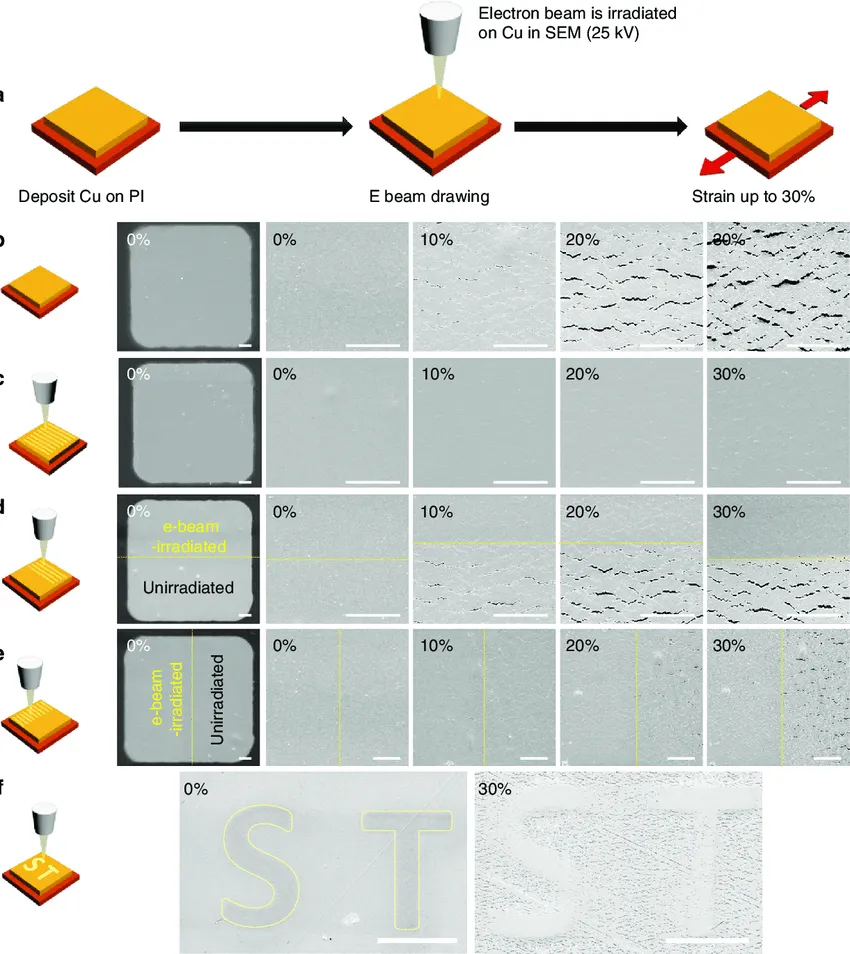Abstract
While cracks are usually considered detrimental, crack generation can be harnessed for various applications, for example in ceramic materials, via directing crack propagation and crack opening. Here, we find that electron beam irradiation prompts a crack suppression phenomenon in a copper (Cu) thin film on a polyimide substrate, allowing for the control of crack formation in terms of both location and shape. Under tensile strain, cracks form on the unirradiated region of the Cu film whereas cracks are prevented on the irradiated region. We attribute this to the enhancement of the adhesion at the Cu–polyimide interface by electrons transmitted through the Cu film. Finally, we selectively form conductive regions in a Cu film on a polyimide substrate under tension and fabricate a strain-responsive organic light-emitting device.


